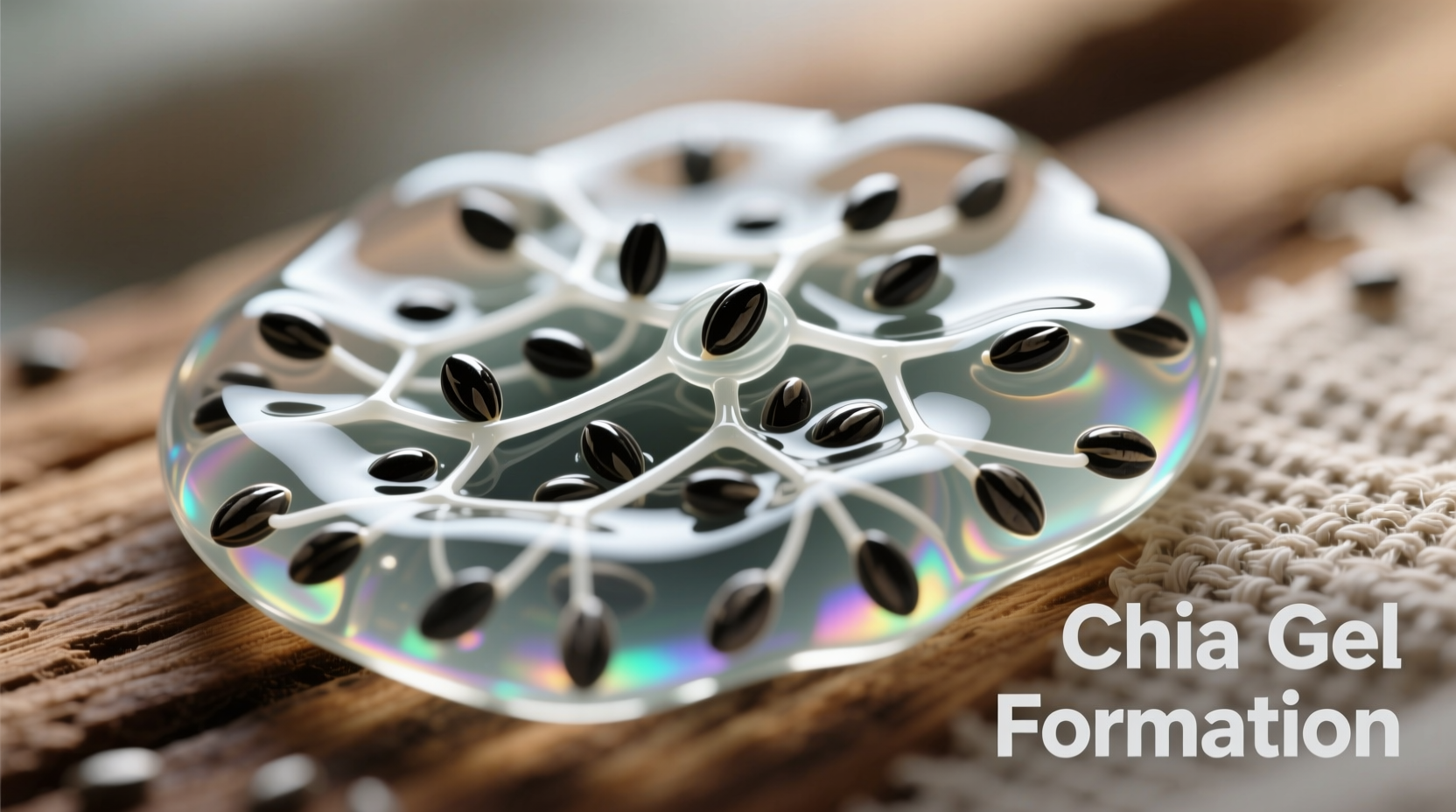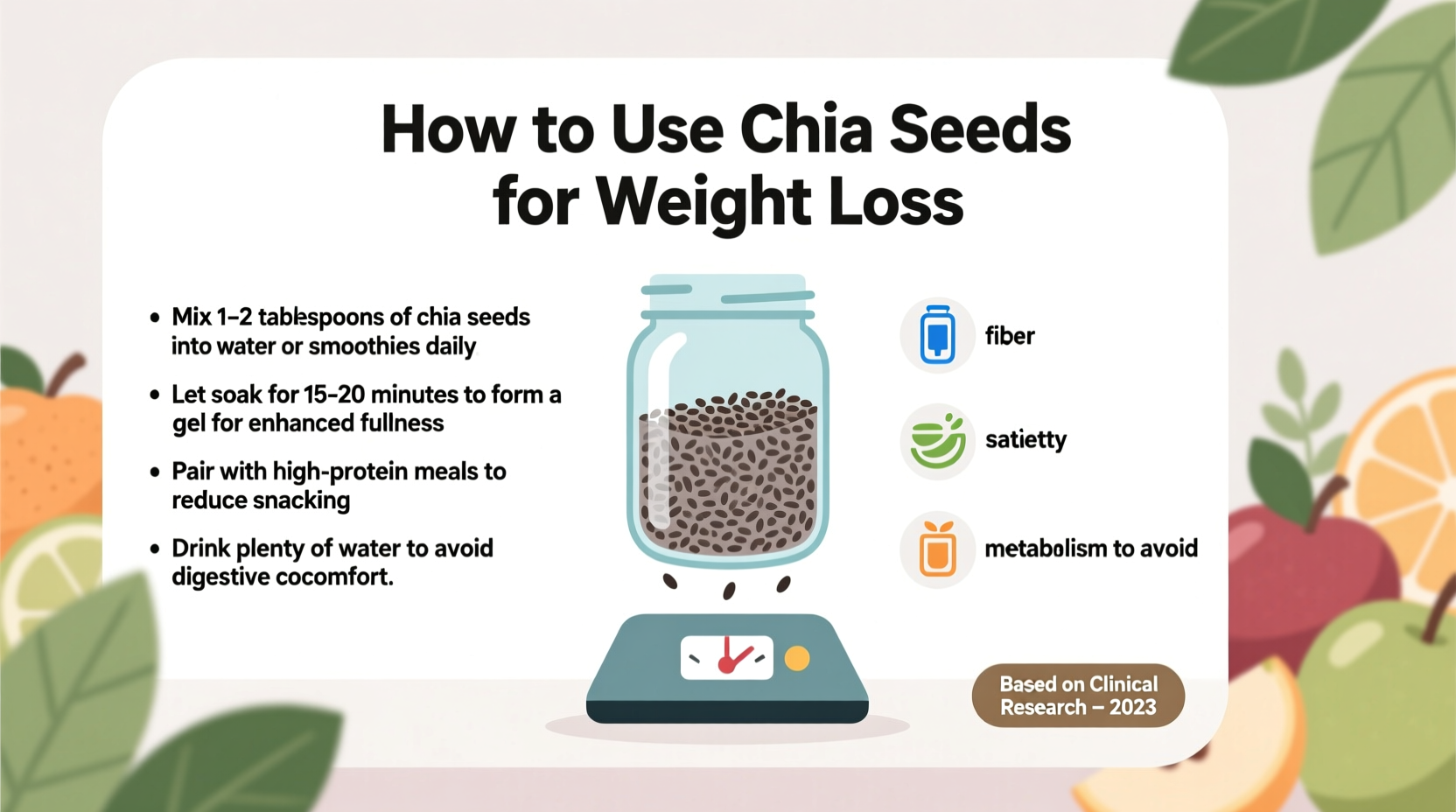Based on current nutritional research, the most effective way to take chia seeds for weight management is consuming 15-25 grams (1-2 tablespoons) daily, soaked in water or incorporated into meals. This provides 10-16g of fiber that promotes satiety, helping reduce overall calorie intake when combined with a balanced diet and regular exercise. Always consume with adequate water to prevent digestive issues.
The Science Behind Chia Seeds and Weight Management
Chia seeds have gained attention in nutritional science for their potential role in weight management. These tiny black and white seeds contain a unique combination of nutrients that may support healthy weight goals when used appropriately.
According to research published in the Journal of Nutrition, chia seeds contain approximately 34 grams of fiber per 100 grams, with a significant portion being soluble fiber. This soluble fiber absorbs up to 10 times its weight in water, forming a gel-like substance in your digestive tract that slows digestion and promotes feelings of fullness.
| Nutrient | Chia Seeds (28g) | Flaxseeds (28g) | Hemp Seeds (28g) |
|---|---|---|---|
| Fiber | 11g | 8g | 2g |
| Protein | 4.7g | 5.1g | 9.5g |
| Omega-3s | 5g | 6.4g | 0.6g |
| Calories | 138 | 150 | 166 |
Nutritional comparison of common seeds (Source: USDA FoodData Central)
Optimal Consumption Methods for Weight Management
How you incorporate chia seeds into your diet significantly impacts their effectiveness for weight management. Here's what research suggests works best:
Pre-Meal Soaking Method
The most effective approach is soaking 1 tablespoon of chia seeds in 3-4 ounces of water for 15-30 minutes before meals. This creates a gel that expands in your stomach, triggering satiety signals. A 2017 study in Nutrition Research found participants who consumed chia gel before breakfast reported 25% less hunger and ate 90 fewer calories at their next meal compared to the control group.

Strategic Timing for Maximum Benefit
Research indicates timing matters when using chia seeds for weight management:
- Morning consumption: Taking chia seeds first thing in the morning can help regulate appetite throughout the day
- Before main meals: Consuming chia gel 20-30 minutes before lunch or dinner reduces meal size by approximately 15-20%
- Post-workout: Combining chia seeds with protein after exercise supports recovery without excessive calories
Realistic Expectations and Limitations
Understanding the boundaries of chia seeds' effectiveness is crucial for sustainable weight management. Chia seeds are not a magic solution but rather a supportive tool when used correctly.
Context Boundaries: When Chia Seeds May Not Work
Chia seeds have limitations that affect their weight management potential:
- They won't compensate for consistently excessive calorie intake
- Effectiveness diminishes without adequate water consumption (minimum 8 ounces per serving)
- People with certain digestive conditions may experience discomfort
- Results vary significantly based on overall dietary patterns and physical activity
Research Timeline: What We've Learned
Scientific understanding of chia seeds for weight management has evolved significantly:
- 2009: Early studies focused primarily on chia's nutritional composition rather than weight effects
- 2012-2015: Research began examining chia's impact on satiety and blood sugar regulation
- 2017: First controlled studies demonstrated chia's appetite-suppressing effects in humans
- 2020: Comprehensive review in Nutrients journal confirmed chia's potential role in weight management as part of balanced diets
- 2023: Current research focuses on optimal preparation methods and long-term effects
Safety Considerations and Proper Usage
While generally safe, chia seeds require proper usage to maximize benefits and minimize potential issues:
Recommended Daily Amounts
For weight management purposes, research supports these guidelines:
- Start with 15g (1 tablespoon) daily to assess tolerance
- Gradually increase to 25g (1.5-2 tablespoons) if well-tolerated
- Never exceed 50g daily without medical supervision
- Always consume with at least 8-10 ounces of water per serving
Who Should Exercise Caution
Certain individuals should consult healthcare providers before using chia seeds for weight management:
- People with swallowing difficulties or esophageal strictures
- Those taking blood thinners (chia seeds contain omega-3s)
- Individuals with irritable bowel syndrome (IBS)
- People with known seed allergies
Integrating Chia Seeds into Your Weight Management Plan
For sustainable results, chia seeds should complement rather than replace fundamental weight management strategies:
Effective Combinations
Pair chia seeds with these evidence-based approaches:
- With protein: Add to Greek yogurt or protein shakes to enhance satiety
- With hydration: Use as a base for infused water with lemon or cucumber
- With mindful eating: The expanded volume encourages slower eating
- With meal planning: Incorporate into advance-prepared breakfasts and snacks
Avoid These Common Mistakes
Many people undermine chia seeds' potential benefits through these errors:
- Consuming dry seeds without adequate water
- Adding excessive sweeteners that negate calorie benefits
- Expecting results without addressing overall dietary patterns
- Using chia seeds as a replacement for vegetables and whole foods
Practical Implementation Guide
Here's how to successfully incorporate chia seeds into your daily routine:
- Start small: Begin with 1 tablespoon daily to assess tolerance
- Soak properly: Mix with 3-4 times the amount of water and wait 15-30 minutes
- Timing matters: Consume 20-30 minutes before your largest meals
- Track effects: Note changes in hunger levels and digestion for 2 weeks
- Adjust gradually: Increase to 1.5-2 tablespoons if beneficial and well-tolerated
- Combine wisely: Pair with protein and vegetables for balanced meals
Realistic Timeline for Results
Understanding the realistic progression helps maintain motivation:
- First 3-5 days: Noticeable increase in fullness after meals
- 1-2 weeks: Potential reduction in between-meal snacking
- 3-4 weeks: Possible modest weight changes when combined with other healthy habits
- 8+ weeks: Sustainable results emerge as part of comprehensive approach











 浙公网安备
33010002000092号
浙公网安备
33010002000092号 浙B2-20120091-4
浙B2-20120091-4